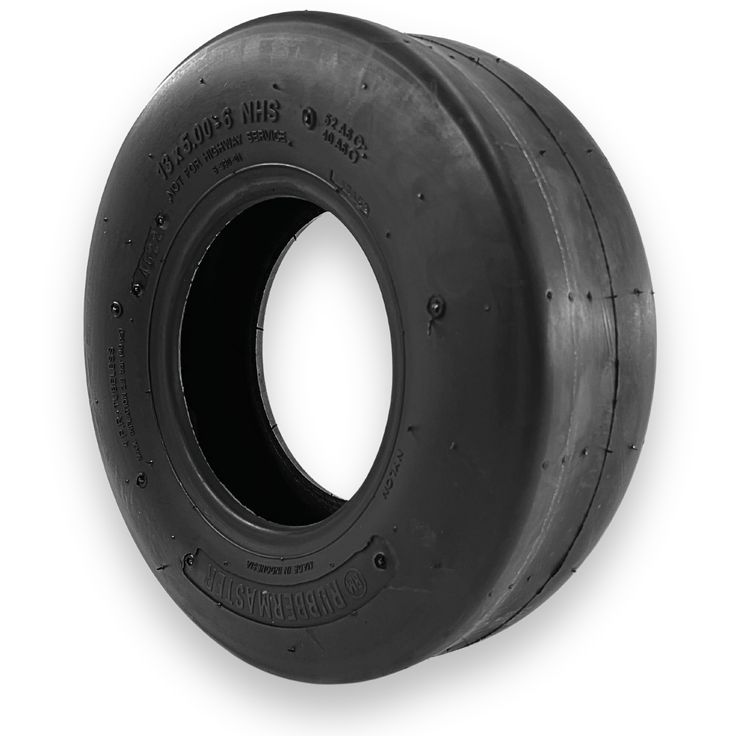Introduction to Tubeless Tires
Tubeless tires represent a significant advancement in bicycle and automobile technology. Unlike traditional tires with a separate inner tube, tubeless tires feature an integrated design. This means no separate inner tube is present. Instead, the tire itself creates an airtight seal against the rim. By doing so, they provide a more reliable and efficient system. The absence of an inner tube reduces the chances of punctures due to tube pinching, commonly known as a ‘pinch flat’.
Understanding how tubeless tires work begins with recognizing their simple yet effective structure. They utilize the rim, bead, and sealant to maintain air pressure and prevent leaks. This combination also enhances performance and comfort. In the ensuing sections, we will delve into the specifics of each tubeless tire component and their roles. This will include a look at the inner workings that help tubeless tires maintain air pressure and self-seal in case of punctures.
The popularity of tubeless tires is due to their many benefits. Some of these benefits include improved handling, better puncture resistance, and weight reduction, all of which we will explore in detail. Whether you’re a cycling enthusiast or a car owner, grasping how do tubeless tires work can lead to better choices for your vehicle‘s performance and maintenance.

The Components of Tubeless Tires
Understanding how do tubeless tires work involves a look at their key components. Each part plays a vital role in the tire’s function and performance.
The Bead
The bead is a crucial element of the tubeless tire. It is a sturdy loop made of steel or a high-strength material. The bead fits snugly against the rim of the wheel. Its job is tough, but simple: keep the tire firmly in place. Proper bead seating ensures an airtight seal. Without a good seal, air could leak, making the tire go flat. The bead’s role is critical during installation and while riding.
The Rim
The rim supports the tubeless tire and works closely with the bead. It has a special design for an airtight lock with the tire bead. The rim also has a surface that holds the sealant in place. For tubeless setup, the rim must be smooth and free of defects. This ensures the bead seats correctly and air pressure stays consistent.
Tubeless Sealant
Tubeless sealant acts as an insurance against leaks. This liquid coats the inside of the tire and fills minor punctures instantly. The sealant is a blend of latex and other compounds that dry quickly. When a puncture occurs, the escaping air forces the sealant into the hole. The sealant then dries and creates a permanent plug. Regularly checking and replacing the sealant is part of tubeless tire maintenance.
The Science Behind Tubeless Tires
Understanding how tubeless tires work blends physics and chemistry. It’s the science that backs up their performance.
Air Pressure Maintenance
Tubeless tires maintain air pressure in a unique way. A tight seal forms between the bead and rim. This keeps air inside, even on rough terrain. Air can’t escape easily, making the tire stable. Regular air pressure checks ensure top performance. Keep an eye on it, just like any tire.
Self-Sealing Mechanism
The self-sealing magic of tubeless tires comes from the sealant. When a tire hits a sharp object, the sealant springs into action. It rushes to the puncture and dries fast, plugging the hole. You might not even notice a puncture, thanks to this quick fix. It’s like having a repair kit built right into the tire. But remember, the sealant isn’t forever. Replace it as needed to keep the self-sealing power strong.
Advantages of Using Tubeless Tires
To truly grasp how do tubeless tires work, it’s essential to explore their benefits. Tubeless tires offer several advantages over traditional tires with inner tubes. These benefits contribute to overall improved performance, which we will outline below.
Improved Handling
Tubeless tires enhance handling and ride quality. Without an inner tube, they can run at lower air pressures. This increases the tire’s contact area with the ground. The result is better grip and control, especially in corners and rough terrain. Riders and drivers can feel this improvement in stability and responsiveness.
Better Puncture Resistance
The lack of an inner tube means fewer chances for pinch flats, a common issue in traditional tires. The construction of tubeless tires allows them to resist sharp objects more effectively. When pierced, the sealant inside quickly seals small punctures. This ability to self-seal maintains tire pressure and reduces the risk of a flat tire.
Weight Reduction Benefits
Tubeless tires contribute to weight savings on a bike or vehicle. By eliminating the inner tube, the overall weight decreases. This can lead to faster acceleration and less rolling resistance. For cyclists, this means easier climbing and quicker maneuvers. In vehicles, lighter tires can improve fuel efficiency and performance.
Installation Process for Tubeless Tires
To understand how do tubeless tires work, it’s crucial to know how to install them properly. A correct installation ensures that the tubeless system functions as designed. Now let’s break down the steps for putting tubeless tires onto your vehicle or bike.
Preparing the Rim
Begin with a clean rim. Remove any dust, dirt, or old sealant. This ensures a tight seal. Check the rim for damage. Any dings or cracks can cause leaks. Apply tubeless rim tape. The tape must cover all spoke holes completely. This also helps in creating an airtight barrier.
Mounting the Tire
Next, place the tire onto the rim. Start at one end and work your way around. Use tire levers if needed, but be gentle. Avoid damaging the bead. It needs to stay intact to seal properly. Once on, check that the bead is evenly seated around the rim.
Sealing and Inflation
Now add the sealant. Pour the recommended amount inside the tire. Rotate the tire to spread the sealant around. Inflate the tire until you hear the bead snap into place. This sound signals a good seal. Check the air pressure. Adjust it to the tire’s recommended settings.
Throughout the process, ensure that everything fits well and is airtight. Properly installed tubeless tires offer a smoother ride and fewer punctures. With these steps, your tubeless tires will be ready to hit the road or trail.
Maintenance Tips for Tubeless Tires
To ensure that tubeless tires maintain optimal performance, regular maintenance is essential. Proper care not only extends the lifespan of the tires but also enhances safety for the driver and passengers. Below are detailed tips on how to effectively maintain tubeless tires.
Regular Inspection
1. Frequency of Inspections
Make it a habit to inspect your tubeless tires frequently, ideally at least once a month. Regular checks allow you to catch potential issues early before they escalate into serious problems.
2. Signs of Wear or Damage
During inspections, be vigilant for visible signs of wear. Look for:
- Tread Wear: Check the tread depth by using a tread depth gauge or the penny test (insert a penny into the tread; if the top of Lincoln’s head is visible, it’s time for new tires). Insufficient tread depth reduces grip and increases the risk of hydroplaning.
- Cracks and Cuts: Examine the surface of the tire for any cuts, cracks, or punctures. These can lead to air leaks and compromised performance.
- Bulges or Blisters: Inspect the sidewalls for any bulges or blisters, which can indicate internal damage. This type of damage can lead to blowouts if not addressed promptly.
3. Additional Checks
In addition to the tire surface, also check the inflation levels. Use a tire pressure gauge to ensure your tires are inflated to the recommended PSI. Under-inflated or over-inflated tires can affect handling and tire longevity.
Sealant Replenishment
1. Understanding Sealant Depletion
The sealant within tubeless tires dries out over time due to factors like temperature changes and the passage of air. Thus, monitoring and replenishing the sealant is vital in maintaining the self-sealing capabilities of your tires.
2. Recommended Frequency
It is advisable to add sealant every few months or as needed, especially if you notice a drop in tire pressure or if your tires have been in use for an extended period without checkups.
3. Following Manufacturer Guidelines
Always refer to the manufacturer’s recommendations regarding the type and amount of sealant suitable for your specific tubeless tires. Using the wrong type of sealant can lead to ineffective sealing or damage to the tire.
4. Application Process
When adding sealant, it’s important to ensure an even distribution inside the tire. After pouring in the recommended amount, spin the tire slowly to facilitate the even spread of sealant over the inner surface. This step helps seal any punctures effectively.
5. Checking Effectiveness
After adding sealant, it’s wise to inspect the tire for air retention. Check tire pressure within a few days to confirm that the sealant is functioning properly and that there are no air leaks.
Benefits of Following Maintenance Tips
1. Maximizing Performance
Regular maintenance, including consistent inspections and proper sealant replenishment, significantly enhances the performance of tubeless tires. Well-maintained tires offer better traction, handling, and fuel efficiency, contributing to a safer driving experience.
2. Avoiding Emergencies
Proactive care can help you avoid sudden tire issues, such as blowouts or severe leaks. By addressing small signs of wear early, you can prevent the need for emergency repairs or replacements while on the road.
3. Cost-Effectiveness
Investing time in maintenance can lead to substantial cost savings in the long run. Properly maintained tires typically last longer, reducing the frequency of tire purchases and potentially lowering fuel costs due to improved efficiency.
4. Enhancing Safety
Keeping tires in top condition ensures the safety of the vehicle occupants and others on the road. Reliable tires improve braking distances, stability, and performance in various driving conditions.
By following these maintenance tips, you can effectively care for your tubeless tires, ensuring they perform well throughout their lifespan. Regular inspections and timely sealant replenishments not only contribute to your safety but also help you understand how do tubeless tires work, enhancing your overall driving experience. Keep your tires in excellent condition, and enjoy the smooth and worry-free rides ahead!
Common Challenges with Tubeless Tires
While tubeless tires offer many benefits, they also come with challenges. Two common issues users face are seating the bead correctly and troubleshooting leaks.
Seating the Bead
Seating the bead can be tricky. The bead must sit tight against the rim to form an airtight seal. Sometimes, the bead won’t seal just right. Air can leak, and the tire won’t inflate properly. To fix this, first make sure the rim and bead are clean. No debris should be in the way. Next, inflate the tire quickly. A burst of air can push the bead into place. You may hear a popping sound. This means the bead has seated correctly. If problems persist, applying a little soapy water on the bead can help. The slippery surface can guide the bead into the right spot.
Leak Troubleshooting
Leaks can happen even in the best tubeless systems. First, check the tire for punctures. If you find a hole, add more sealant. This could seal the puncture right away. If the tire keeps losing air, inspect the rim tape. Any damage or lifting can cause leaks. Replace it if needed. Also, make sure the valve is tight and sealed. Sometimes, the problem is a defective valve. In that case, replacing the valve should solve the issue. Regular maintenance and quick action can prevent and fix leaks, keeping your tubeless tires in top shape.
Conclusion
To wrap up, understanding how do tubeless tires work is vital for anyone utilizing this technology. From their robust components, like the bead and the rim, to the versatile tubeless sealant, each part plays a pivotal role. We’ve explored the science that allows tubeless tires to maintain air pressure and effortlessly self-seal after punctures. The benefits are clear, including the superior handling, resistance to punctures, and reduced weight that enhance performance.
Proper installation is paramount. It dictates how well the tubeless tire functions. Cleanliness of the rim, correct mounting of the tire, and precise sealing and inflation lead to an optimal setup. Regular maintenance, such as inspections and sealant replenishment, extends the life of tubeless tires and keeps them performing at their best.
Despite their numerous advantages, challenges like seating the bead and troubleshooting leaks can arise. But with the right knowledge and tools, these issues are manageable. By following the informed tips and addressing problems promptly, you can enjoy the full potential of your tubeless tires.
Tubeless tires are more than just a trend; they’re a leap forward in tire technology. They deliver reliability and efficiency on the road or trail. Now that you know how do tubeless tires work, you’re better equipped to make informed decisions about your vehicle’s tires and maintenance.



